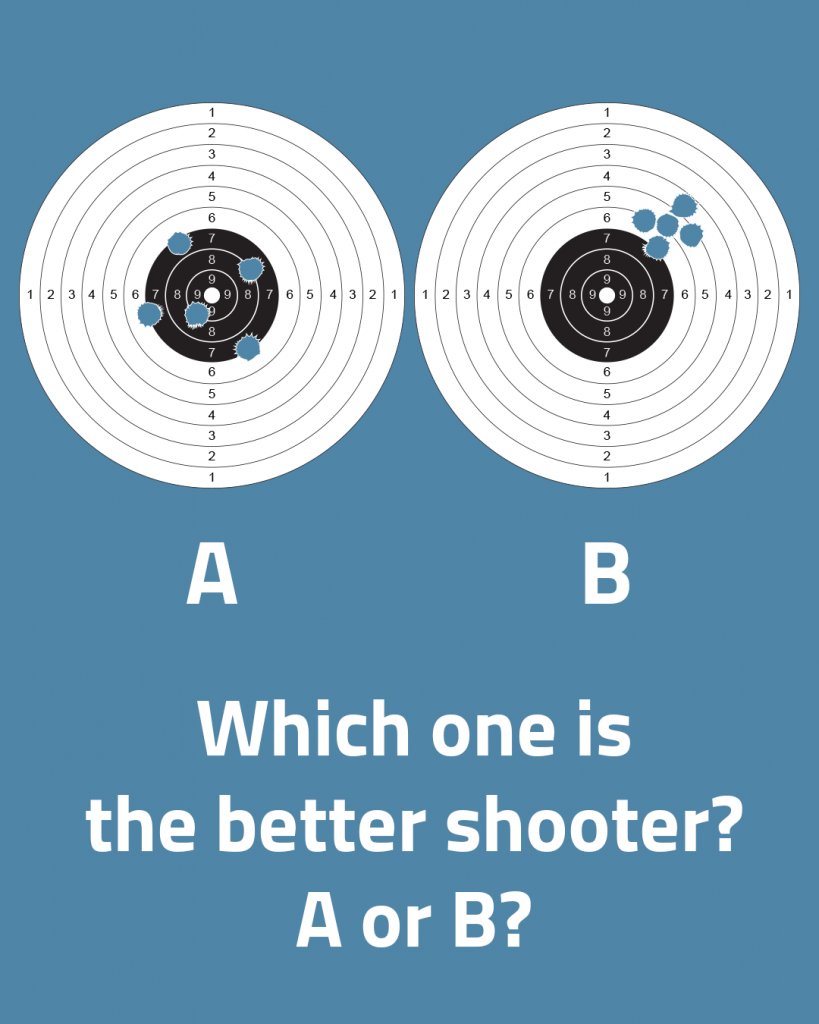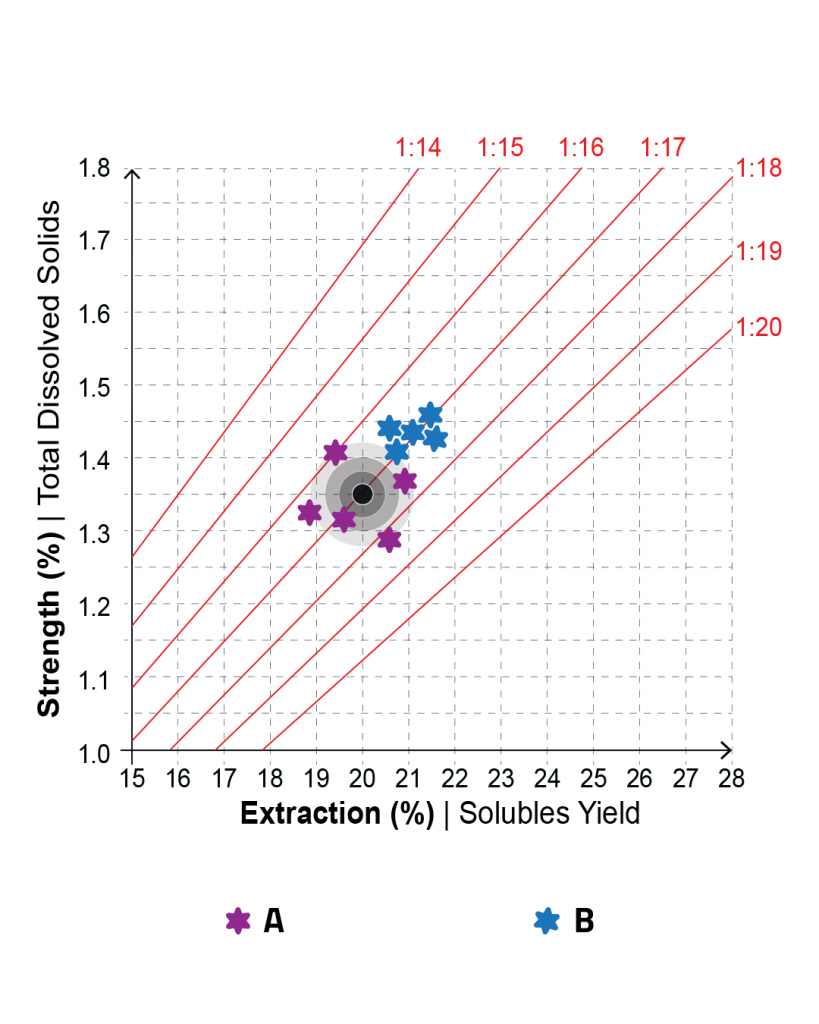In precision disciplines such as shooting, the ability to hit the target depends on two key factors: accuracy and precision. Accuracy refers to how close the shots are to the bullseye, while precision describes how close the shots are to one another. A shooter who consistently places shots tightly together, even slightly away from the center, can make a simple adjustment to the weapon and quickly align with the target. But when shots are scattered across the board—even if some land closer to the bullseye—achieving true consistency becomes far more challenging.

The same logic applies to coffee brewing. A barista who produces repeatable results—even if they are not initially perfect—has a much greater chance of reaching the desired brewing outcome by making small, informed adjustments. In contrast, a barista whose results vary widely will struggle to stabilize their brews, since every attempt produces a different outcome.

Repeatability vs. Accuracy in Brewing
Consider the brewing control chart:
- Barista B shows high repeatability, with all brews clustering together, although the cluster lies slightly outside the ideal zone. A simple adjustment, such as grinding coarser or modifying the brew ratio, can shift this entire cluster into the target range.
- Barista A, however, demonstrates low repeatability. Although some brews are closer to the target, the overall spread indicates poor control of variables. For Barista A, small recipe adjustments will not necessarily lead to stable, reliable results, because the inconsistency stems from technique rather than recipe parameters.
This distinction highlights a crucial truth: repeatability is the foundation of consistency. Without it, accuracy alone is unstable and unreliable.
Why Repeatability Matters in Competition
In competitions like the Brewers Cup, repeatability is tested directly. Competitors must brew the same coffee three times in succession, and the sensory profile must remain identical across all cups. Judges assess not only the quality of the coffee but also the barista’s ability to maintain consistency and deliver what they have promised in their description. A barista who lacks repeatability cannot succeed, even if one brew happens to be excellent.
Why Repeatability Matters in Cafés
In a café, the importance of repeatability multiplies. Here, multiple baristas prepare the same recipes throughout the day. Even a single barista may brew differently at different times, depending on fatigue, pace, or focus. Customers, however, expect consistency: the same cup they loved yesterday should taste the same today, regardless of who prepared it.
For this reason, café brew recipes must be designed to reduce dependence on individual technique. The goal is to minimize variability while maintaining high quality. This involves not just the recipe itself but also the way the recipe is taught, practiced, and controlled across the team.
Elements that Enhance Repeatability
To design and execute repeatable brewing recipes, baristas and café managers should focus on a few critical aspects:
- Choice of Brewing Device – Select equipment that allows for stability and minimizes unnecessary variability.
- Consistent Preparation – Standardize steps like filter placement, pre-wetting, and preheating so that every brew starts under the same conditions.
- Stable Parameters – Ensure water temperature, grind size, and brew ratios are measured and controlled accurately.
- Pouring Technique – Define and practice clear instructions for number of pours, pouring speed, pouring height, agitation, and stirring. These are often the most variable steps and need strong discipline.
- Team Calibration – Baristas should practice brewing together, compare outcomes, and align on technique. This creates a shared brewing language within the café.
By focusing on these elements, cafés can significantly reduce the impact of individual differences and create recipes that perform consistently across shifts and baristas.
Conscious Control vs. Habit
Another critical dimension of repeatability is the barista’s mindset. Many baristas rely on habitual techniques—always pouring in the same way, regardless of the coffee or device. While habits may create consistency in the short term, they often limit adaptability.
True mastery comes when a barista can consciously control brewing variables such as agitation, pouring rhythm, or turbulence, not by force of habit but by deliberate choice. This allows the barista to adapt their technique to the unique characteristics of each coffee while still maintaining repeatability within a given recipe.
Repeatability is more than just a technical detail—it is the foundation of brewing consistency, both in competitions and in daily café operations. Accuracy without repeatability produces unstable results, but repeatability, even when slightly off-target, can be corrected and refined.
Just as a skilled shooter can adjust their aim once their shots are grouped tightly, a skilled barista can refine their recipe once they have achieved repeatable control. By designing recipes that minimize variability, practicing conscious brewing techniques, and fostering a shared brewing language among café teams, the coffee experience becomes not only delicious but also reliable, cup after cup.

Leave a Reply